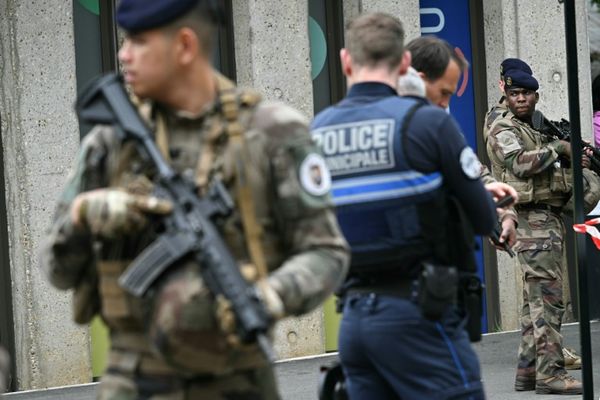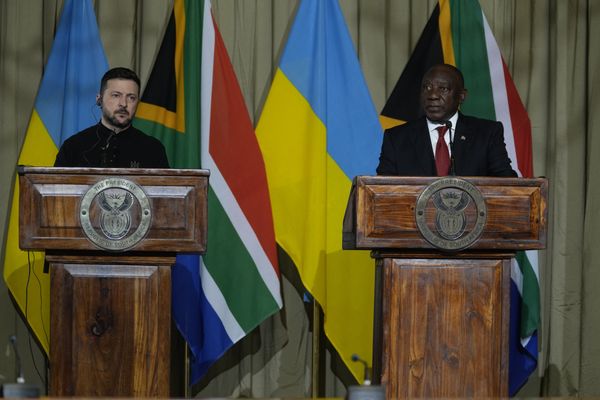Every NBA season moves so quickly and is unbelievably jam-packed. It’s hard to catch everything; nobody does, despite what some may claim. New trends, breakouts, minor developments and changing roles can drift into the abyss that is each night’s loaded schedule of entertainment. To provide a lifeboat amid the season’s chaos, the Sportscasting NBA crew each selected one number we fond compelling and wrote about its relevance.
Let’s get to it.
79
Through roughly a quarter of the season, the Phoenix Suns have opted for a three-center rotation, toggling among veterans, Jusuf Nurkic and Mason Plumlee, and second-round rookie Oso Ighodaro. Lately, though, with Nurkic sidelined because of a right thigh contusion the past three games, Plumlee and Ighodaro have carried the load.
Over that span, Ighodaro has logged 79 minutes — 28.6 percent of his season total — and showcased the outline of a complementary 5-man Phoenix desperately seeks around its star trio. Ighodaro is a space-carving screener and astute as a short-roll facilitator. He owns a soft push shot that requires little prep to deliver. According to Cleaning the Glass, he’s shooting 86 percent at the rim and 50 percent from short midrange.
Oso Ighodaro flashes some really useful skills offensively playing alongside the Suns’ stars pic.twitter.com/enPoifq9Ff
— SportscastingNBA (@SportcastingNBA) December 6, 2024
His decisiveness and interior effectiveness are what distinguish him from Nurkic offensively. The Bosnian big man is a talented, albeit somewhat undisciplined and sometimes slow processing, playmaker, who struggles mightily as a finisher. His touches offensively seem to define the tone of possessions. Ighodaro merely fits into the story around him. That’s what the Suns need from their center.
Defensively, Ighodaro’s short-area mobility is vastly better than Nurkic’s and allows for some different looks in ball-screen coverages. He’s still adapting to the league’s physicality and his 4.2 fouls per 36 minutes can spur troubles. But there’s absolutely a prominent place for this ability in Phoenix’s rotation, even once Nurkic returns.
The defensive mobility here from Oso Ighodaro really pops. Adds a new, welcomed layer for the Suns with short-area quickness like this. pic.twitter.com/OXe6f47Kez
— Jackson Frank (@jackfrank_jjf) December 5, 2024
The center position has plagued the Suns for a few seasons now. Nurkic’s arrival in place of the mercurial Deandre Ayton last fall didn’t alleviate that and his slow start to 2024-25 only further intensifies concerns. Ighodaro is flashing the chops to fill crucial gaps where Nurkic falls short. It’s worth expanding his role in this three-man platoon and determining how much he can grow before April’s postseason is here.
Barring a trade — where Phoenix is significantly limited — his development is probably the best potential answer to this group’s glaring questions inside. That possibility must be explored. –Jackson Frank
123.4
Across the last two weeks of NBA play, the offensive rating leaders look mostly as one may expect. According to Cleaning the Glass, four of the top five offensive teams over that stretch are the New York Knicks, Dallas Mavericks, Memphis Grizzlies and Oklahoma City Thunder, all usual suspects. It may come as a surprise to learn the Chicago Bulls boast the second-strongest offense (123.4 points per 100 possessions) over the previous two weeks.
Leading the NBA in pace (105 possessions per 48 minutes) and placing second in transition frequency (23.1 percent), the Bulls run more than any other team in the league. Chicago attempts 47.1 percent of its shots from beyond the arc at a 38.4 percent clip, ranking fifth both in frequency and efficiency.
This is a major departure from the philosophy of head coach Billy Donovan’s previous Bulls teams. Last season, they played at the third-slowest pace (96.8) with the lowest transition frequency (14.3 percent). Chicago’s 3-point frequency was a paltry 35.8 percent. Pace and space have helped fuel offensive success, despite a roster lacking elite talent.
Nikola Vucevic’s revival has been critical to this success — he’s posting career highs in true shooting (69.3 percent), Offensive Estimated Plus-Minus (plus-4.0) and 3-point percentage (46.8 percent). Coby White and Zach Lavine form a dangerous backcourt and the fast-paced style fits Josh Giddey’s strengths. Chicago’s long-term outlook is still murky, but its recent offensive success deserves some attention regardless. –Ben Pfeifer
11
One of the most underrated free tools out there is Spotrac’s NBA Injury Tracker, which tells people how many player games and how much cash a team has lost due to injury. Through six weeks, the Minnesota Timberwolves have lost the fewest games (and fewest dollars) to injury this season, only surrendering 11 games to the worst part of sports.
That is meaningful because, despite experiencing such great fortune on the health front, the Timberwolves aren’t very good. At 11-10, they’re just 10th in the Western Conference. Their defense has also gone from historically great (first in defensive rating last year) to just very good (currently seventh).
Usually, you can use bad injury luck to explain a slow start for a team (like the Sacramento Kings). What do we say for Minnesota – a team barely above .500 with all their guys at full strength? And even worse, what happens if the injury gods stop smiling in their direction? Do they fall out of the mix entirely?
Even if they do manage to stay in pristine condition, the Timberwolves are far from the 56-win team that stormed to the Western Conference Finals last postseason. –Mat Issa
59
With no LaMelo Ball, the Charlotte Hornets have given Brandon Miller the green light, particularly from behind the arc, where he’s attempting nearly 15 threes a night in his last four games and knocking down 36 percent of his looks.
Taking a combined 23 shots from downtown a night, Ball and Miller are a highly prolific outside shooting duo. What’s interesting is the variety of looks Miller is getting while Ball is out. Miller is taking nearly six pull-up threes a night in this stretch — well above his season average of 3.8. He’s doing that and still leading the team in catch-and-shoot attempts with 8.8 per game. It’s an absurd volume, and I absolutely love it.
This all correlates with an added emphasis from the Hornets to put the ball in Miller’s hands. He has a 33.6 percent usage rate during that span (up 6 percent from his season average) and he’s taking nine more shots a game, assuming the bulk of the responsibility with Ball sidelined.
Miller has done well to work with Ball this season and their collective blend of shotmaking and scoring makes the Hornets entertaining to watch. Yet this upcoming run should give him room to stretch his legs offensively and develop his on-ball craft at a higher level with newfound attention from defenses.
Keep letting it fly, Brandon Miller. –Es Baraheni







